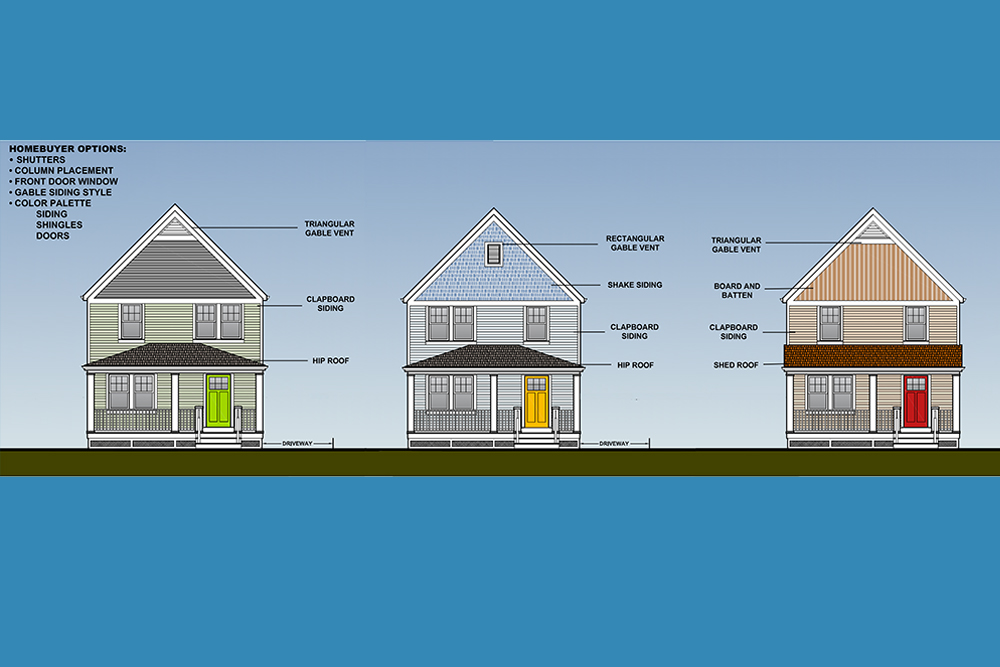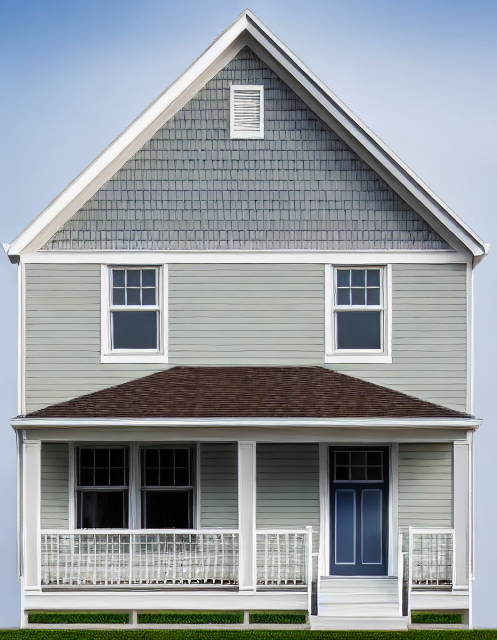Cleveland Habitat for Humanity launches 400 Home Initiative
“Go big or go home?” Not in the case of Greater Cleveland Habitat for Humanity’s latest project.
Instead, it is more like this: “Go big and go home!”
On Tuesday, August 29, Greater Cleveland Habitat for Humanity broke ground in the Buckeye-Woodhill neighborhood on the largest project in its history—its $33 million 400 Home Initiative that intends to create housing stability and wealth creation for some of the region’s underserved neighborhoods by 2027.
Of the 400 households that will be impacted, 100 homes will be new construction for low-to-moderate income homebuyers; 50 existing homes will be rehabilitated; and the remaining 250 homes will receive critically needed repairs, such as new roofs, siding, windows, or porches.
“For the families, the simplest piece is having a place to call home and to become a homeowner,” Greater Cleveland Habitat for Humanity president and CEO John Litten says. “The impact on the individuals is profound.”
The August groundbreaking ceremony occurred on Crestwood Avenue, where work on the 400 Home Initiative has already begun
 Rendering of one of the new constructed homesAn opportunity
Rendering of one of the new constructed homesAn opportunity
Over the next three years, the project will focus on the Buckeye-Woodhill, Mount Pleasant, Collinwood, West Boulevard, and Detroit Shoreway neighborhoods, as well as in Euclid, Elyria, and Lorain.
The new homes will be sold at appraised value with no-interest mortgages.
“It’s important to note that we don’t give our homes away,” Litten says. “It’s actually a zero-interest mortgage that our partner families, our future homeowners, have the opportunity to take on.
“These homes are sold to people at the appraised value, and that means it goes at market rate essentially,” Litten continues. “We are selling the home at market rate and making the mortgage loan more palatable for the buyer through tax abatement that we’re able to get on the homes through just working with the families to make the terms something reasonable for them. We’ve been well received by all the public officials.”
The homeowners will invest their own sweat equity, instead of money.
“They’re building equity for themselves through their own work and investment into the property,” says Litten. “Once we start that mortgage with them, their only down payment is service—so they do 200 to 300 hours of service, either on the home they’re going to live, in our [Habitat] Restores, or through workshops that we provide to prepare people for home ownership.”
Cleveland Mayor, Justin BibbA group effort
To undertake such an initiative, Habitat for Humanity received support from community partners Cleveland City Council, which allocated $5 million in ARPA funds to Habitat in May; the State of Ohio, which awarded Habitat for Humanity of Ohio $25 million in ARPA funds in January; Cuyahoga Land Bank; and other philanthropic support from community stakeholders.
“This is an expansion of our services, thanks to the generosity of some of our donors,” Litten says. “They have all come together to contribute very generously, and we are excited to be able to expand our services in this way.
“It’s been wonderful to work with all the public officials and administrators at the different city and state entities that we’ve been able to work with. I think people see us as a positive influence on a neighborhood. I don’t get the sense of what’s called ‘nimbyism.’ NIMBY is ‘Not In My Backyard,’ where people don’t want our housing in their neighborhoods. We haven’t had much pushback at all in that regard.
During the groundbreaking ceremony, Cleveland City Council president Blaine Griffin and Ward 15 council member Jenny Spencer spoke about the project’s impact.
Ohio Senators Kent Smith and Matt Dolan, and State Representative Darnell Brewer also spoke with the media about the initiative.
Cleveland Mayor Justin Bibb commented on the Habitat initiative in a statement: “I am proud of the work we are doing to create housing stability for those in Cleveland who have the greatest need and the best opportunity to achieve independence and security. And we are deeply grateful to Greater Cleveland Habitat for Humanity and the Cuyahoga Land Bank for leading this important initiative.”
Habitat for Humanity 400 Home Campaign Groundbreaking CeremonyLong term plans
Litten says planning for the 400 Home Initiative has taken about two years and began with former Habitat Cleveland president and CEO John Habat.
“It’s been a lot of work with the different entities to line up the funding,” Litten says. “The American Rescue Plan Act as a funding stream has really helped what we wanted to do. It was going to be a 100-home campaign, and we saw the opportunity to grow it to be a 400-home campaign.”
He adds that the commitment from Habitat staff and volunteers has been equally critical.
“I’m surrounded by a mission-driven staff and slate of volunteers,” Litten says. “Everybody who does this work, whether it’s in the finance department, or building a house, or in our stores, is driven by the concept of people being able to realize the opportunity of home ownership and the ability to grow that mission.”
Volunteers needed
Making the plans and securing the funding are only part of the equation to make this project possible.
With hundreds of homes set to be built or repaired over the next three years, Habitat will need thousands of volunteer hours to fulfill the mission of ensuring “every person has a safe, decent, and affordable place to live,” while building “economic stability and generational wealth.”
“It’s time, it’s talent, and it’s treasure,” says Litten. “If people are able to give any of those three things, we would benefit. Certainly, we’re always looking for everything from core volunteers that are with us weekly to one-off volunteer days for a group, a community, or a corporation as well.”
He recommends going to the Cleveland Habitat website to find ways to get involved.
This latest – and largest – project continues the work Cleveland Habitat has done over the last 35 years.
Since 1987, the affiliate has utilized the efforts of more than 80,000 volunteers to work on homes for more than 300 families, impacting the lives of thousands of children.
Habitat has worked in more than 20 neighborhoods, and Litten has seen first-hand the kind of positive effect these homes have—not only for the new homeowners but also in the surrounding areas.
“The impact on the communities we work in is also profound in that crime rates will drop in an area where we focus,” Litten says. “The property values increase at a rate faster than other communities would, just by virtue of the work that we do, concentrating it in this way.
“There’s a lot of intrinsic benefits that come with us building homes and providing homeownership opportunities in this way. We also see parks put in, community gardens and things like that, that also add to the betterment of a community.”



